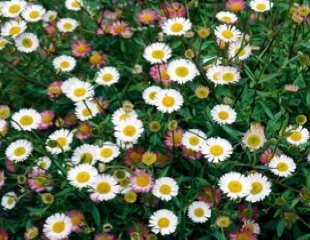

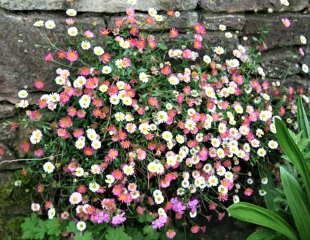
How to Grow Erigeron
Erigeron is a simple, small summer flowering herbaceous perennial.
In relation to Erigeron karvinskianus, the flowers are quite small illustrated far left and right. E. Erigeron glaucus 'Sea Breeze' illustrated in the centre, has much large flowers which are consistently mauve with yellow centres. With E. karvinskianus the flowers open white and become pink with age and each plant will have many flowers which are replaced over a long, summer flowering period.
These are the two varieties commonly sold and grown. Both are reliable, easy to grow, ideal for the front of the border, rockeries, crevices, and Sea Breeze, as the name suggests, is good in coastal gardens. Erigeron flowers for a long time with multiple flowers.
Where to plant Erigeron
Plant Erigeron in a sunny position in well-drained soil which does not dry out. In fact Erigeron is tough and will grow in many garden soils drier soils in steps and wall crevices. E. karvinskianus will grow to a maximum height of .5m, and is fully hardy. It is a self seeder, although not invasive, and is tolerant of partial shade.
Erigeron Glaucus is suitable for coastal gardens. Its common name is seaside fleabane, beach aster, or seaside daisy illustrated in the centre image which, as the name suggests, is ideal for seaside gardens.
Once established, E. karvinskianus returns reliably each year and flowers profusely. Ideal for the front of a border, in a garden wall or rocker and as shown above, can be ideal to cover old steps or to soften a paved area. It has the RHS award of garden merit a good indicator of a reliable garden plant.
Effective planting of Erigeron
Creeping out of a wall
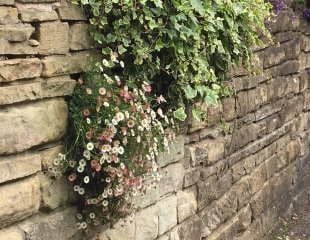
Erigeron cascading down steps
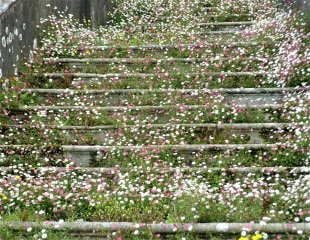
Erigeron near water
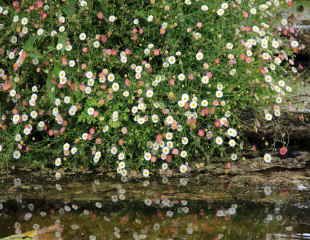

Erigeron is a simple plant and easy to grow, making it a green wheelbarrow plant.
